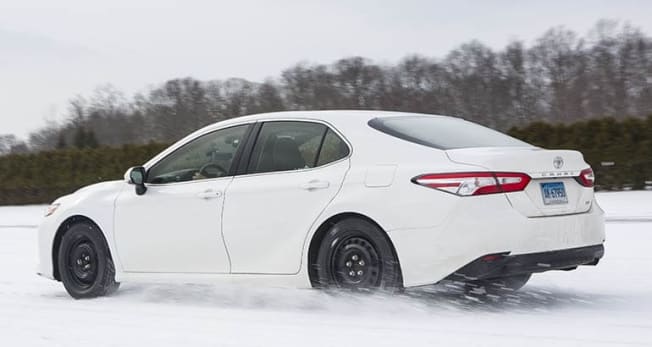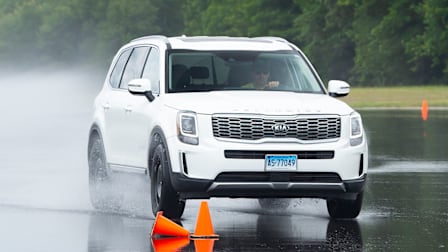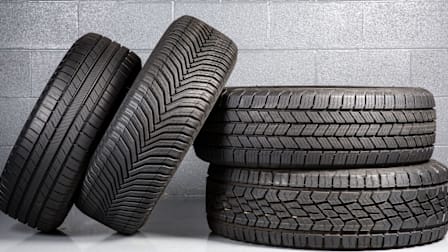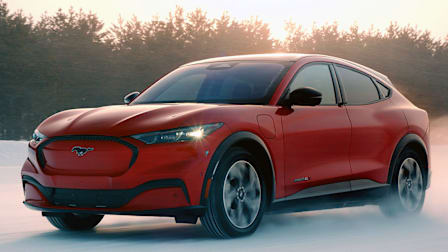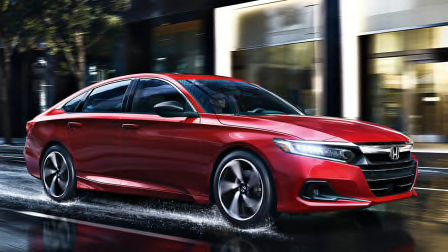Best All-Season Tires for Winter Driving
CR shows you how to choose the best tires for your seasonal needs, with specific recommendations
When you shop through retailer links on our site, we may earn affiliate commissions. 100% of the fees we collect are used to support our nonprofit mission. Learn more.
Cooling temperatures are a clear signal that it’s time to inspect your tires and make sure you’re ready for winter weather.
Tread depth is a key factor in how well tires can resist hydroplaning and sliding in snow. Tires are considered worn out when the tread is down to a 2⁄32-inch depth. But for winter, it’s wise to start shopping at a 4⁄32-inch depth.
If you need tires, fall is the best time to buy. This is when tire retailers tend to have the most inventory and money-saving deals. Be sure to have two or three models in mind based on Consumer Reports’ testing when you call or visit your local tire shop.
How to Measure Tread Depth
Place a quarter head-down in a tread groove. If the top of George Washington’s head is just visible, the tread has about a 4⁄32-inch depth. That’s enough to offer some all-weather grip, but it’s time to start thinking about replacement.
Choosing the Right Tire Type
Changing your all-season tires for winter/snow tires will provide the best available grip in foul winter weather and at sub-freezing temperatures. These specialized tires offer optimal grip for stopping, accelerating, and navigating sharp turns on snow or icy roads. However, this replacement strategy incurs expense and inconvenience: Changing tires every winter means purchasing another set of tires, and likely new wheels. Further, winter/snow tires don’t last as long as all-seasons, and they typically compromise grip on dry and wet roads.
How CR Tests Tires
Consumer Reports tests more than 40 tire models every year, including those for cars, SUVs, and trucks, totaling hundreds of individual tires. We do this at our track in Connecticut for wet and dry braking, handling, ride comfort and quietness, and resistance to hydroplaning (when water gets between tires and the pavement). We do our snow-traction tests at our Auto Test Center and in northern Michigan. Ice-braking evaluations are done at a nearby skating rink.
The Overall Score for winter/snow tires emphasizes snow traction and braking on ice, the main motivations for buying such tires in the first place. Winter/snow tires typically have a tread compound that stays pliable in the cold and numerous biting edges for gripping snow and ice. The trade-off is a shorter tread life. So we don’t test winter/snow tires for tread life, and most don’t have treadwear warranties because they’re intended to be used for just one season a year.
If you’re a CR member, this full article and the list below are already available to you. But if you haven’t signed up yet, click below and become a member to access this list and all of our exclusive ratings and reviews for each vehicle we buy and test.
Find the Best Tires in Each Category That Fit Your Car
Use our tire selector, which you’ll find at the top of our tire ratings.
